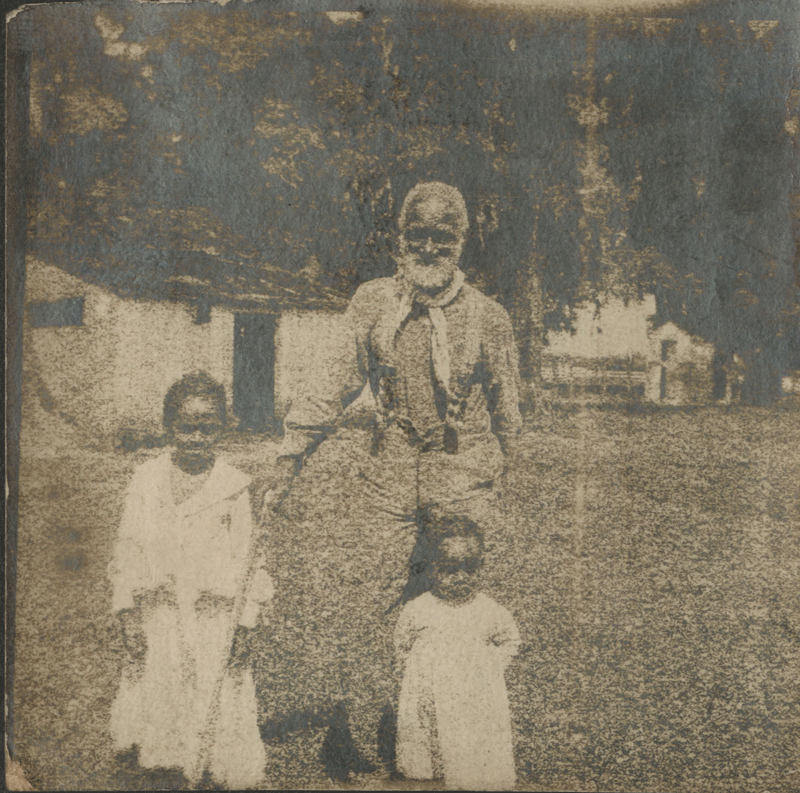First photo of Georgetown Slave found in library archives
March 30, 2017
Photo by: Submitted Photo
A photo of Frank Campbell, found in a scrapbook the Ellender Memorial Library archives.
A Nicholls archivist discovered the first known photograph of a Georgetown slave in the Ellender Memorial Library.
Clifton Theriot, archivist and interim director of the Ellender Memorial Library, was reading through a genealogy quarterly and came across the name “Frank Campbell.”
He thought, “I’ve seen this name before.”
Theriot recognized the name from a small photograph in a scrapbook in the library archives. He said that the reason the name stuck in his head was because of the photograph’s odd caption. In pencil, the caption read, “Frank Campbell, our old servant. 19, when the stars fell.”
After some research, Theriot found that the falling stars referred to a meteor shower that took place in 1833.
“Thankfully, somebody in 1941 wrote this caption because otherwise we would have never known who this man was,” Theriot said. “Even if his name had been written there and the captions were not, I don’t think it would have stuck with me.”
Frank Campbell was enslaved on a Jesuit plantation in Maryland. In 1838, he was shipped to a sugar plantation in Louisiana along with many others who were sold to raise money for what is now known as Georgetown University.
The sugar plantation was called Roberta Grove and is South of Houma. Robert Ruffin Barrow Jr. owned it. It is presumed that his daughter created the scrapbook in which Campbell’s picture was found.
Campbell’s photograph is the only known photo of the 272 Georgetown slaves.
“It adds a human touch to the story,” Theriot said. “People had the names and dates, but now they have the image of someone who lived throughout slavery.”
The picture shows an old Frank Campbell with a white beard standing with two young girls. Theriot explained that the youngest girl in the photo is Mary Jane, Campbell’s granddaughter. Since she appears to be about one or two years of age in the photo, it is concluded that the photograph was probably taken around 1905.
Theriot hopes that this finding will encourage other people to look into archive facilities or family albums to see if other photographs exist.
Earlene Campbell-Coleman, great-great-great granddaughter of Frank Campbell from North Carolina, recently came to the archives at Nicholls to see the photo with her sister.
“To see the expression on their faces made all of this worth it,” Theriot said. “To me, that was the best part of the whole thing: to see the happiness and joy with the descendants.”
Theriot said Campbell-Coleman even cried when she got to see the pictures.
“It is reuniting the image with their family,” Theriot said. “That is the fun part of working in the archive. It is connecting families with part of their past.”
The Ellender archives preserve much of what life was like along Bayou Lafourche and surrounding areas dating back to the 1700s.
“If it is not preserved, our history is lost. In my opinion, that is a tragedy,” Theriot said.
Theriot also related the importance of history preservation to the yearbook cancellation controversy that has taken place on Nicholls campus in these past few weeks.
“I was sorry to hear about the yearbook because a lot of alumni come here to see the past yearbooks,” Theriot said. “That is the reason a lot of events are documented and photographed. If there is no reason to have these photographs taken or published, I’m concerned that the photographs won’t be taken. The yearbook is an important part of preserving the history of the time that students are here.”
